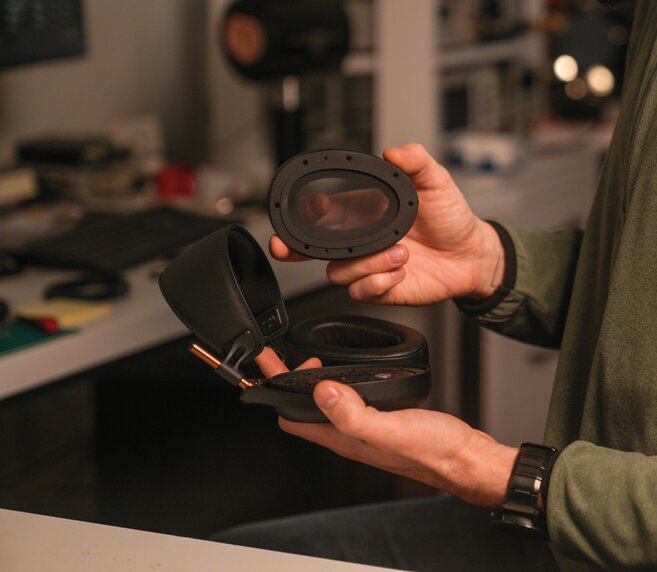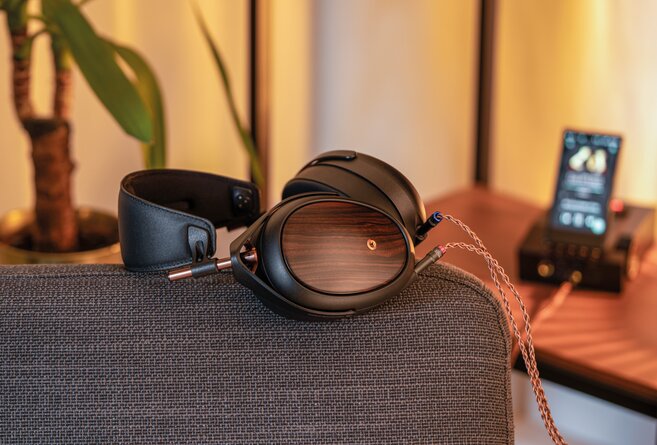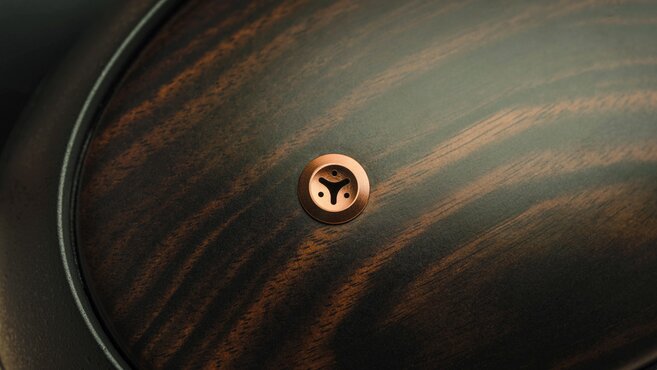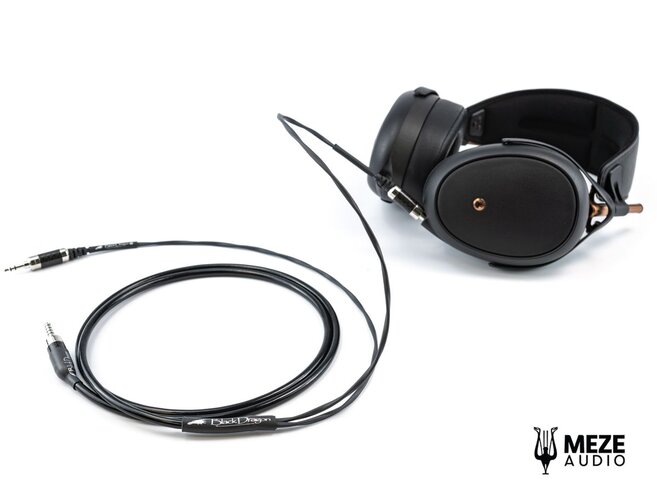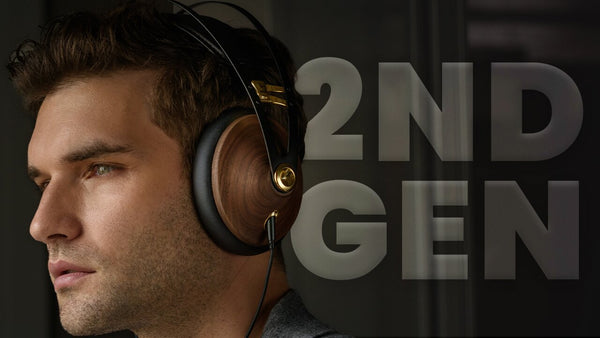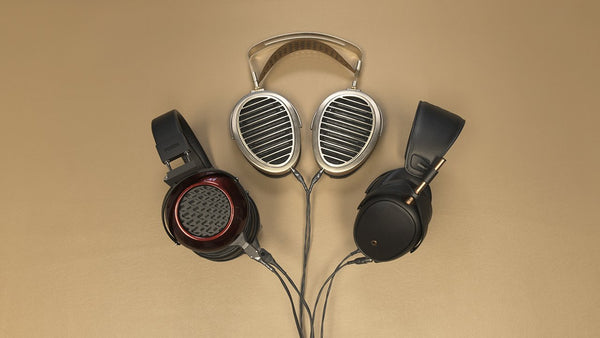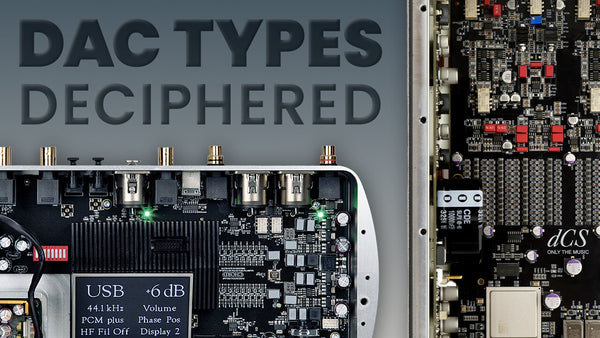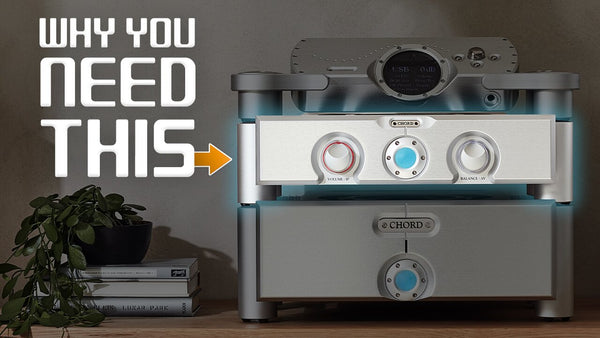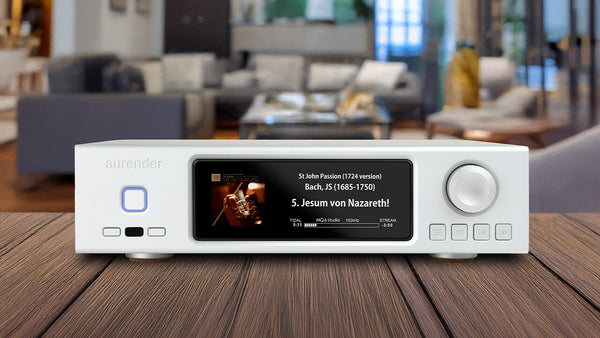Meze Audio Liric II Headphone Review & Comparison

A More Refined 2nd Generation of Closed-Back Headphones
The original Liric was one of the last headphones I got super excited about. There's something about a closed-back planar magnetic headphone that hits all the right spots for me. The fidelity, detail, and resolution of the planar driver and all the energy being contained inside the ear cup - it makes for an exciting listening session time and time again.
The Liric was a popular headphone not just because of how it sounded (which was phenomenal) but also because it's one of the sexiest-looking headphones on the market. You might say that's a subjective thing, but you can deny the all-black aesthetics and copper-accented details. It's a premium experience inside and out. To be honest, it was a bit of a surprise to learn that Meze Audio was releasing an update to their still-popular high-end closed-back headphone. I'm not complaining by any means, but you also have to wonder if it's really necessary at this junction in the lifespan of the original Liric.
I'll go ahead and put your mind at ease - The Liric II isn't just a new headphone with wood earcups. There are some serious sonic differences that we're going to need to delve into a bit further. A lot of these differences are internal as well, so without further adieu, let's get to it.

PROS
- New wooden earcups are just the touch of premium to upgrade the Liric design
- Amazing comfort and styling
CONS
About Meze Audio
For the past 10 years, Meze Audio has been developing audiophile headphones and earphones renowned for their timeless design, pure comfort, and engaging, vivid sound. From looks to technology, Meze Audio products are designed to surpass all short-living trends and become heirlooms, rather than just headphones. Today, founder Antonio Meze and his skilled team design and develop their products in Baia Mare, Romania, in the spirit of their original ‘no-compromise’ vision.
About Rinaro Isodynamics
Rinaro originated in the USSR (today’s Ukraine) during the Cold War, as part of a state-funded acoustic technology research program. With government backing and access to advanced testing facilities, the team was able to focus all of its efforts on planar magnetics. A field they have continued to innovate in for the last 30 years, since the collapse of the USSR. In the last decade, Rinaro has expanded its capabilities and capacity with the development of state-of-the-art R&D and manufacturing facilities in Ukraine and Poland. The new facilities have been a driving force in the creation of the revolutionary Isodynamic Hybrid Array technology found in Meze Audio EMPYREAN, ELITE, and LIRIC headphones.
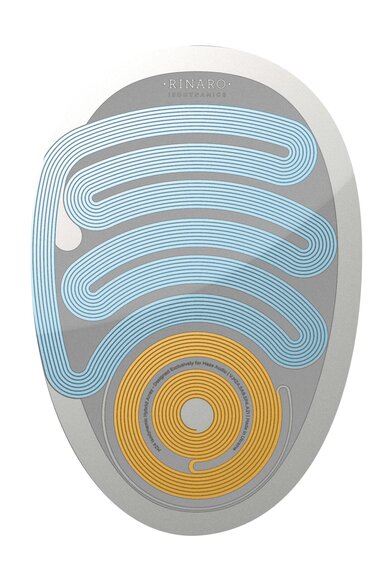
Design
There's a lot to be said about how Meze Audio designs their headphones, and the first thing you'll notice about all their headphones is that they look absolutely incredible. Styling is important to Meze, because you're not going to wear a hideous pair of headphones, right? They make it easy for the audiophile or music lover because their headphones stand apart from the crowd. The leader headband is completely unchanged, with the "Liric" branding on top. The padding is substantial and designed in a way that provides sufficient airflow between the headband and the top of your head. The leather feels extremely premium and just like the original Liric I can wear these for hours without issues.
The rest of the headphone design looks familiar enough: with the copper-colored accents on the earcup stems and internal pressure hole, as well as the swivel mechanism. Meze reserves this style for their more premium headphone lines, namely the Elite, Empyrean (1 and 2), and Liric (1 and 2). It's a superior method of making sure the headphones can adapt to a wide variety of head sizes. Most headphones can only adjust primarily at the headband (stretch) and the earcup (extension), giving only 1 vertical plane to make adjustments based on the circumference of your head. Meze Audio's swivel cup design also allows the earcups to fully conform to the sides of your head based on where you place them. Most people's ears do not align fully parallel to the sides of their head, so making headphones where the earcup can accommodate the angle of your ear and canals is a much better system for comfort and internal acoustics. You know what they say, if it ain't broke...
One interesting omission of the Liric is the lack of any Meze Audio text branding, instead choosing to only show the Meze symbol on the stem of the ear cup. It creates a sleeker look and a more "stealth" aesthetic which is apparently in right now, with a billion stealth-named headphones coming out. The clamping force of the headphones is in that perfect Goldilocks mark - snug but light enough that it doesn't add any pressure on top and on the sides. Superior looks and comfort as always.
Sound
For my testing session, paired the Liric II with the UD-701N Headphone Amp, USB DAC, and Network Player from TEAC and a Black Dragon Premium Cable for the Meze Liric.
There’s a lot to talk about with the new Liric II sound and how it’s evolved from the first-generation headphones. I really enjoyed the tuning of the first Liric headphones, and I think those who lean towards a more analytical nature would likely agree. It was far from being an analytical headphone, but it had enough detail, definition, and texture that I gravitated toward during my listening sessions. It’s still a superb headphone that holds its own today.
Let’s talk about the Liric II. One of the first things I noticed when holding the headphones for the first time was the driver. It’s different. It doesn’t look like the original Liric planar magnetic driver because there’s this new design right smack in the middle of the renowned Isodynamic Hybrid Array. Meze Audio said they revamped the tuning…but…how?
New to the Meze Audio headphone lineup is the Quarter Wavelength Resonator Mask, otherwise known as the QWRM. This is a specially developed, precision-crafted metal component that has been implemented into the driver, covering select openings in the frame of the driver itself. This device helps to attenuate high-frequency peaks above 7kHz, allowing for a smoother and more refined listening experience with less fatigue.
Guess what? That’s exactly what I found during my experience testing the Liric II. It’s a more refined sound - balanced with more warmth than the original Liric headphones. The increased bass response is welcome for sure, as the first generation was tight and controlled, but I wish had a little more oomph. Upper mids were more forward in the Liric, and this time around it’s more of the lower mids that help fill out/round out the sound. After listening to them for about an hour I didn’t know what I was missing the first time around. A much more balanced and natural-sounding presentation with more representation on the bottom end is exactly what the Liric needed.
On the high end, the Liric II retains all the wonderful detail and energy from the first generation, but there is certainly more shine on the upper frequencies that almost sound more rolled-off on the original. This shows extremely well with high brass and cymbals. The shine from the attacks stands out much more on the Liric because they reside in the upper frequencies that the QWRM helps to attenuate. Most importantly, the energy is still there but you’re not getting the harsh, piercing frequencies that make listening to music a pain and only sustainable for short periods of time.
Of course, this varies by recording, so keep that in mind if your experience might be a bit different from mine. That’s okay. As we say, everyone hears differently. Acoustic music - singer-songwriter, folk, alternative, etc - sounds especially lovely with the new tuning of the Liric II. The enhanced body and fullness from the low end, combined with the sharp and detailed attacks from plucking, picking, or strumming make this headphone an absolute delight. See my recommendation below by Jon Foreman. Intimate vocals with a rhythm guitar never sounded so good.
Other sound characteristics worth mentioning are the increased soundstage and better imaging. The wood ear cups add a lot to the airiness and spaciousness of the sound, which is in part why you'll see a lot of wooden earcups in the audiophile world. It's not just for looks but it also greatly affects acoustics inside the chamber.
It’s an upgrade I didn’t think the Liric needed until I heard it. There’s a lot to be said for the first-generation Liric which this officially replaces. It sounds great and it’s a definite recommendation for those who want a more analytical presentation to your favorite music, but the Liric (2nd generation) is the new standard for closed-back planar magnetic headphones for me from here on out.
The Liric II Sound: If the original Liric was neutral-sounding, then the Liric II tries to correct any analytical tendencies for a warmer and more balanced signature. You'll find beefier lows, and even more low-end rumble when paired with the Black Dragon Premium headphone cable for Meze. It's still controlled and articulate, but I think a great pairing for most genres. If the Liric was more upper-mids heavy, then the Liric II trades that off for more lower-mid presence.
Vocals still shine, but you'll hear better balance with instrumentation than the original Liric. It still retains excellent detail and energy in the high frequencies, and the implementation of the new QWRM helps in that regard. It almost sounds like the original Liric had a slight roll-off on the top end in comparison. It's a crisper sound while adding some great additions to the low end of the frequency response. It's enough of an improvement that I don't think I'll ever pick up the Liric 1 ever again.

by Jon Foreman

by Robert Randolph & The Family Band


Features
A Tuned-Up Sound Profile: Fusing Meze Audio's industrial design capabilities with Rinaro's technological development, LIRIC (2nd Generation) brings a new flavor for all the active audiophiles, who take their music on the go, proposing a refined sound, falling in between a balanced and warm profile. To achieve this, the Quarter Wavelength Resonator Mask (QWRM) was developed, a precision-crafted metal component that strategically covers select openings in the driver frame, to effectively attenuate high-frequency peaks above 7kHz for a less fatiguing listening experience.
Design Inspiration: Coming from a tradition of Maramures craftsmanship, Meze Audio decided to preserve the design language of the original Liric, but warm it up with the introduction of wood for the ear cups. This journey led Meze to discover the most potent fit in Macassar ebony –a heavy, dense, aesthetically pleasing hardwood known for its deep, rich brown coloration punctuated by intricate golden-brown stripes. The distinctive nature of Macassar ebony means that each pair is inherently sui generis, or unique in its essence. This characteristic ensures that every headphone is not just a tool for experiencing music, but a personal statement piece with its own story and character.
Designed for Life: In the spirit of natural evolution, LIRIC (2nd Generation) joins the Meze Audio family of products with detachable magnetic ear pads. This ultimately translates into enhanced reliability and serviceability, characteristics that audiophiles and music enthusiasts worldwide have grown accustomed to.
Quality In Every Aspect: Meze Audio's premium hand-braided copper cable now serves as the stock cable for Liric (2nd Generation). Meze focused its efforts on enhancing the listening experience, offering a 4.4 mm termination premium cable suitable for most portable headphone amplifiers, as well as a 3m soft TPE cable with a 3.5 mm jack, ideal for home headphone setups.
Comparisons

The addition of the QWRM make a significant sonic improvement on the high end frequencies - attenuating peaks above 7k. This provides a much smoother and more relaxed presentation in the higher frequencies, still allowing the details to shine, but not as fatiguing for longer listening sessions. The other big difference is the low end. The original Liric has a much more forward high-mid area, whereas the newer 2nd gen version switches that for some more low-mid and low-end presence. It's not dramatic, but enhanced enough from the original that it's a welcome change.
Dragon Cables

Why Dragon Cables?
You’ve heard the saying that a chain is only as strong as its weakest link, right? Well, the same applies to your brand new audiophile-grade headphone or other audio components. The weakest link, in this case, is your stock audio cable or the cheap interconnects the manufacturer threw in the box just to get you up and running. Why is the audio cable always an afterthought, when it’s just as important as the rest of your system? At Moon Audio, we use the purest and best raw materials in our cables to unveil your music. We believe that materials matter and your audio cables should have the same care and craftsmanship that manufacturers put into their audio components and headphones. Audio cables are ultimately the connection to your music. The fact remains that cabling is often considered the last priority to that of the main product and a means to cut down the overall production costs. It’s as simple as that. Dragon Cables elevate every note - as if you were hearing your favorite music for the very time.
Verdict
If the original Liric was neutral-sounding, then the Liric II tries to correct any analytical tendencies for a warmer and more balanced signature. You'll find beefier lows, and even more low-end rumble when paired with the Black Dragon Premium Headphone Cable for Meze Liric. It's still controlled and articulate, but I think it's a great pairing for most genres. If the Liric was more upper-mids heavy, then the Liric II trades that off for more lower-mid presence. Vocals still shine, but you'll hear better balance with instrumentation than the original Liric. It still retains excellent detail and energy in the high frequencies, and the implementation of the new QWRM helps in that regard. It almost sounds like the original Liric had a slight roll-off on the top end in comparison. It's a crisper sound while adding some great additions to the low end of the frequency response. It's enough of an improvement that I don't think I'll ever pick up the Liric 1 ever again. It'll be great for acoustic genres, folk, classical, and alternative, and it makes rock and metal sound exceptionally exciting with the added low end from the original.
Meze Audio did a superb job with the re-tuning of an already great headphone, and it makes me excited for the sonic possibilities ahead for the company. They are at the lead of cutting-edge planar magnetic technology with their partnership with Rinaro. With a more balanced sound, larger soundstage, same amazing comfort and design - it's hard to imagine that they're selling it at the same price. But they are. The Liric (2nd Generation) headphone is the closed-back planar magnetic to beat.
Featured Products
Related Videos
Meze Liric Headphones In-Depth Review & Comparison
Meze Liric Headphones: Drew's First Impressions
Best Closed-Back Headphones of 2023
What's in the Box

-Meze Audio Hard Case
-Meze Audio Premium Braided Copper Cable - 4.4mm Connector
-Meze Audio Standard Cable - 3.5mm Connector
-3.5mm - Quarter-inch Adapter
-Dual 3.5mm Adapter
-Drawstring Cable Pouch
Specifications
- Diaphragm type: Rinaro Isoplanar®[MZ4]
- Frequency response: 4 - 92,000 Hz
- Impedance: 61 Ohm
- Nominal SPL: 100 dB (1mW/1kHz)
- Maximum SPL: > 130 dB
- Total Harmonic Distortion (THD): < 0.15%
- Headphone termination: 3.5 mm TRS jack
- Weight: ~427 gr




